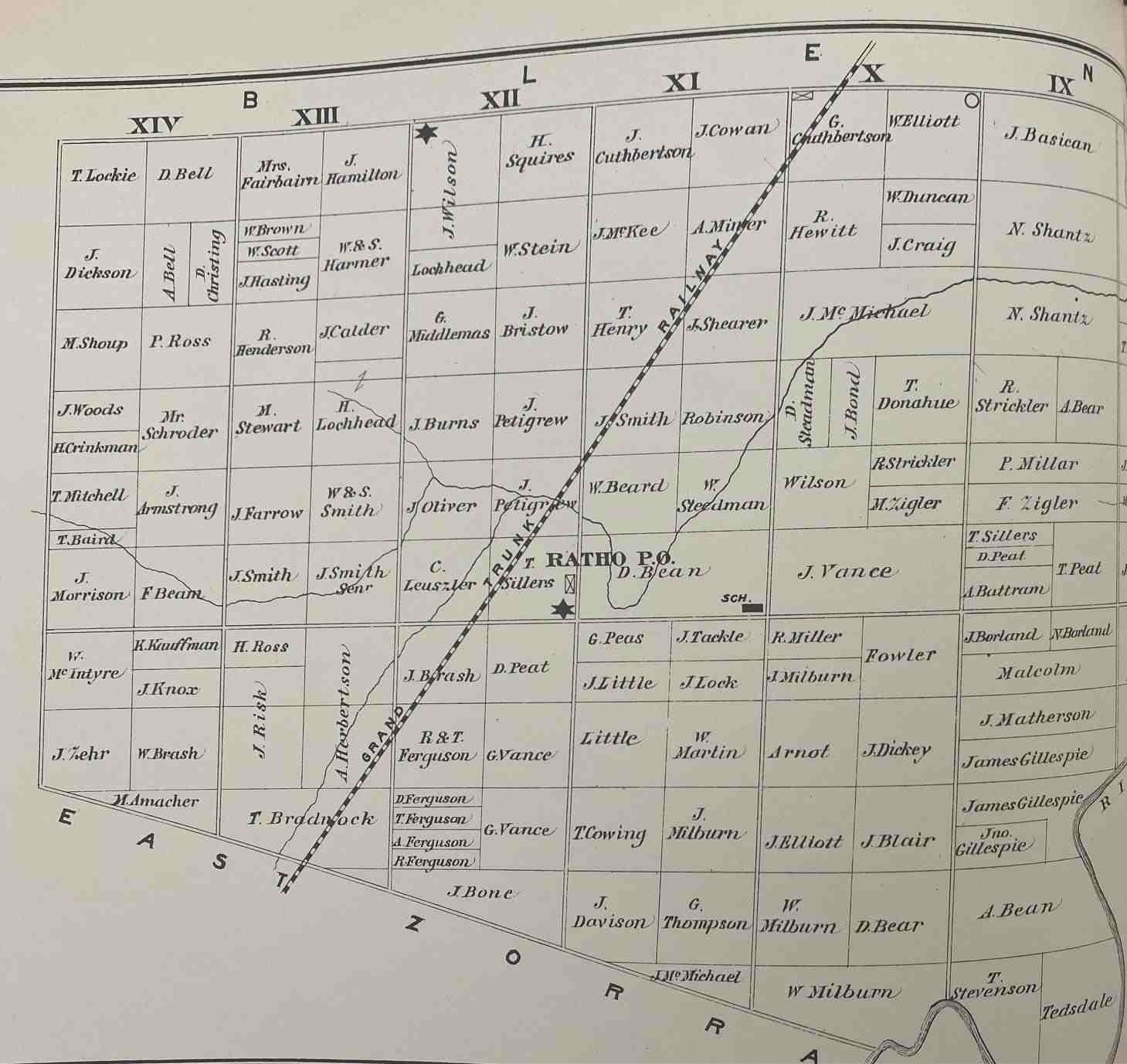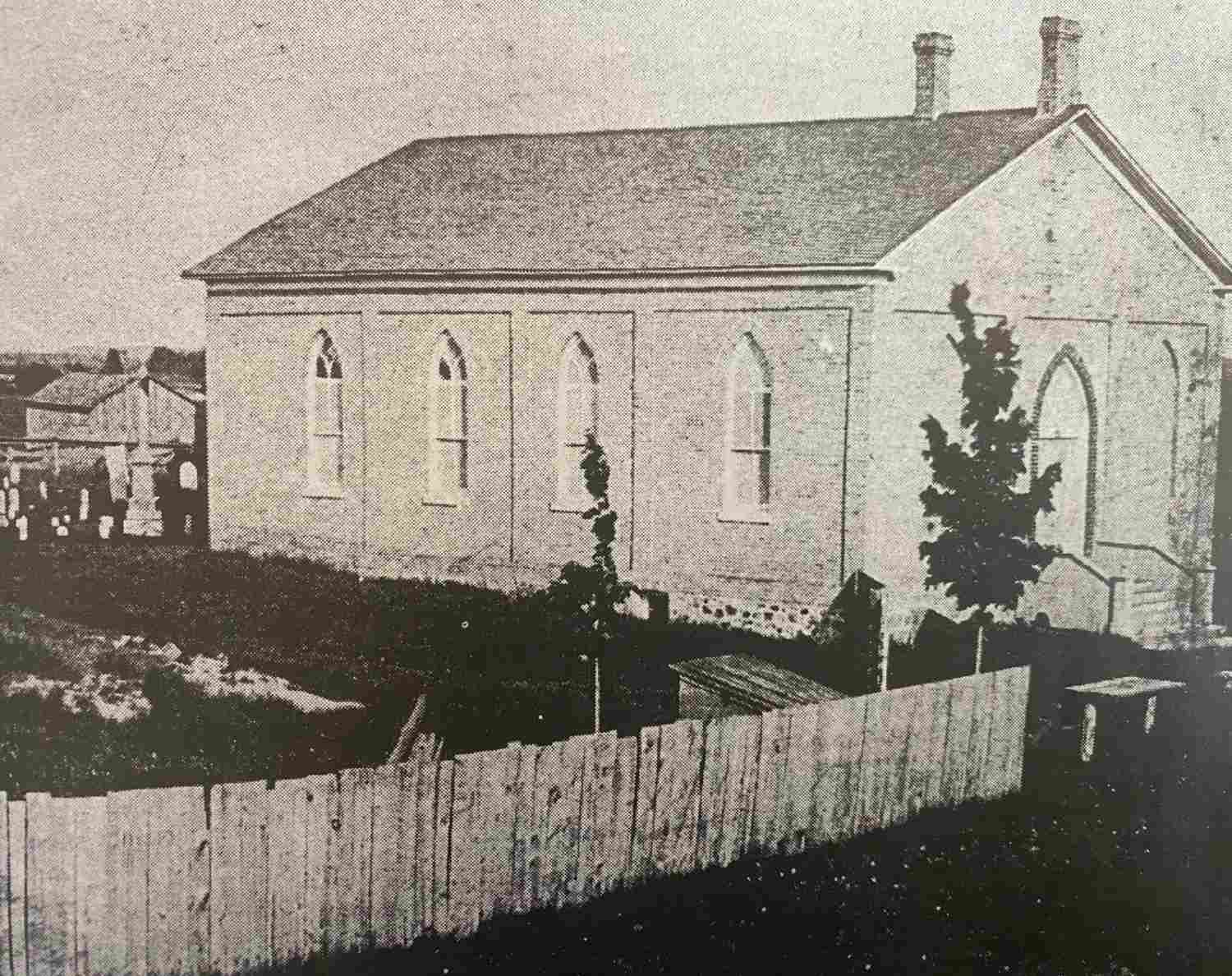The History of Ratho
The History of Ratho
A rural community, located in the municipality of Blandford-Blenheim in the geographical area once pertaining to Blandford Township, the Village of Ratho was officially established in the early 1850s, with the opening of a post office. According to The Place and Stream Names of Oxford County, Ontario written by W.J. Wintemberg in 1925, the village, located on the 12th Concession, was named by Mrs. Barwick, who named it after the village of Ratho, Scotland; her childhood home. It is said, Mrs. Barwick, the widow of Major Hugh Barwick, also named the Village of Innerkip.

Many villagers had high hopes that the Village would grow with the coming of the Buffalo and Lake Huron railroad in 1857, and one Mr. Morrow was said to have built a large two-storey brick store south of the railway (the beginning of what became known as Upper Ratho), and was instrumental in having lots and streets planned and named in preparation of the town’s development. By 1861, the Village had a population of about one hundred, and contained two blacksmith shops, a shoe shop, tailor shop, and the Ratho Hotel, operated by W. Hughes. The Village also contained a Temperance Order, Ratho Reclaim Lodge I.O. of G.T., which met every Tuesday evening at the Temperance Hall. Over the years, this building had been occupied by a number of organization including the Ratho Reclaim and the “Patrons of Industry”, before becoming the Independent Order of Forester’s Hall. By the 1950s the building was used as a store, dance hall, wedding venue and polling station, before being destroyed by a fire in the 1980s.

Original Store built about 1857 by Mr. Morrow. 150 Years: 1852-2002, Ratho Presbyterian Church and Community , pg. 71.
By 1881, the population of the village had slowly grown to one hundred and twenty five, though by the turn of the century, it had dropped to around one hundred again. By WWI, a powdered milk company, Canadian Milk Products, from Hickson (originally begun in Brownsville) opened a branch in Upper Ratho to serve the larger American Market, though after the war the plant shut down, due to lack of demand. This plant was later changed into a fertilizer plant and was run by Art Malcolm.
Religion was quite important to the community, with the first move toward the building of church being made at a meeting held at the home of Thomas Sillers, in 1851. Mr. Sillers offered a suitable site, free of charge, for a church and the Ratho Presbyterian Church, was subsequently built in 1852 (in the area that became known as Lower Ratho) at the cost of eight hundred dollars. The cemetery would have been built soon after. In 1891, the Ratho Women’s Missionary Society (W.M.S.) was established and remained active for seventy-four years. In 1949, the first meeting of the Goforth Sisters, a junior auxiliary group of the W.M.S. was held. Likewise, in 1925, the first Mission Band was formed under the auspices of the W.M.S. It was later referred to as the Sunbeam Mission band. The Church still plays an active role in the community today.

In 1857, Abraham Bean was paid £12, S10 for a school site, on land located in the south part of Lot 6, Concession 11 of Blandford Township. A two-roomed school was built about two hundred yards east of the crossroad and later, a framed teacher’s house was built on the southeast corner of the lot. In 1915, a new school was built on the side road south of the corner. In terms of local school fairs, S.S. #4 Blandford was the first school in the Township to win not only the Township Championship in Stock-Judging, but also the County Championship at the Woodstock Fair. By 1969, the school had closed its doors, and students were bused to the nearby new larger school in Hickson, Ontario.
Today, there is no businesses or industry in Ratho, though it is a pleasant rural community with a rich and vibrant history.
